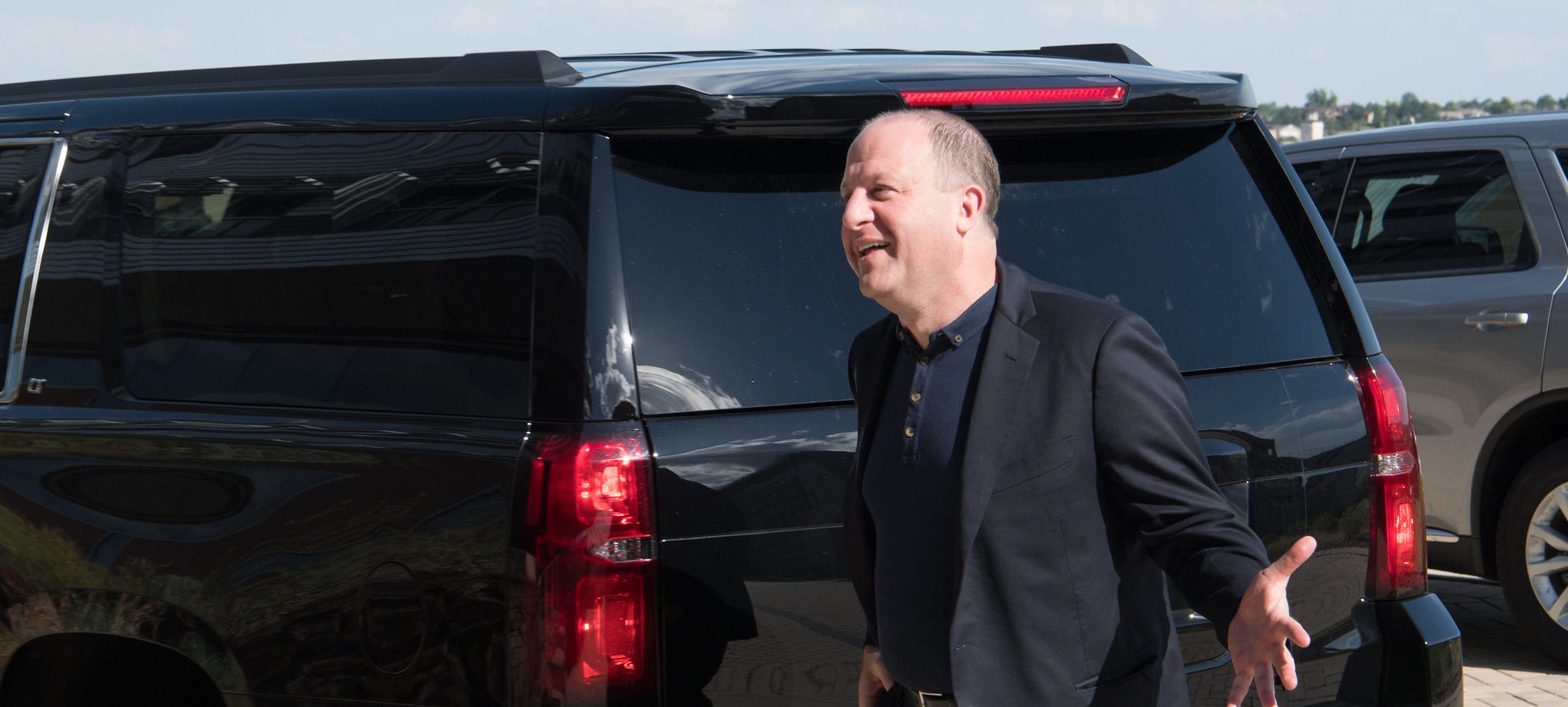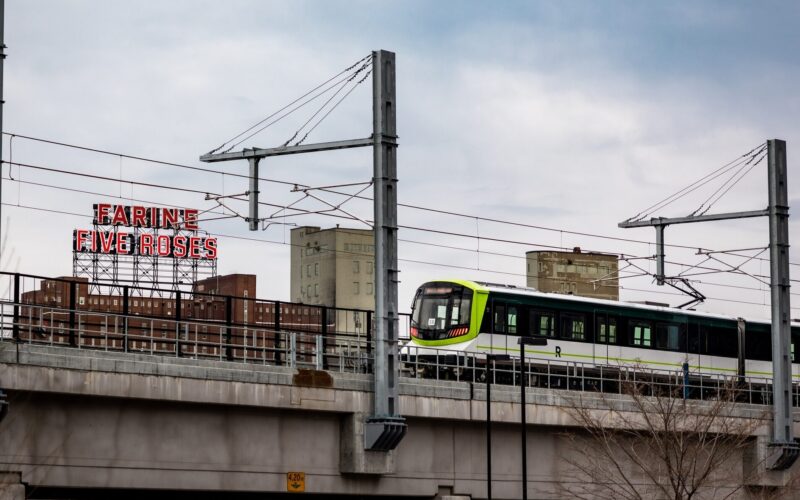
Soon after Debra Johnson took the helm of Denver RTD last November, she gave transit riders cause for optimism. In her first few months as CEO, she indicated a willingness to tackle festering problems at the agency and a commitment to improving the quality of service. It was a welcome change for RTD, which for too long functioned more like a construction firm for sparsely-used rail expansions than an agency responsible for providing reliable and convenient service to transit riders.
But the budding progress at RTD is under threat from Colorado’s own governor, Jared Polis, who has assumed an adversarial position toward Johnson and the agency. Over the past six months, Polis has pressured the agency to move forward on an ill-conceived rail extension from Denver to Boulder, and omitted funds for RTD from the state’s transportation budget after Johnson and several board members expressed skepticism about the project’s feasibility. These decisions are at odds with the Polis administration’s stated emissions reductions goals, and make it more difficult for RTD to deliver good transit service to the riders who depend on it the most.
The political turmoil comes on top of fiscal problems exacerbated by the pandemic. Local sales tax revenue, which funds RTD’s FasTracks expansion program, has consistently come in below projections, with the agency taking on massive debt to finance the six rail lines it built between 2013 and 2020. RTD analysts predict that many of those lines will need costly repairs starting in 2026, putting additional strain on the budget. Ridership, meanwhile, was trending downward for several years before COVID, eating into the fare revenue that makes up 25% of the agency’s funding. As of September, RTD will only be running 70% of pre-pandemic service.
Recent legislative changes that will allow RTD to begin collecting parking revenue at its stations may help, but are miniscule compared to the scale of what’s needed. Colorado advocates have identified at least $1 billion in annual needs for transit and other multi-modal transportation priorities across the state.
For Polis, however, priority number one is not to shore up the RTD’s core services, but to build the 35-mile “B Line” rail extension connecting Denver, Boulder, and Longmont. A holdover from the FasTracks expansion package Denver voters approved in 2004, the B Line is now projected to cost nearly $2 billion but carry a mere 800 riders per day. RTD predicts it will not have the cash on hand to complete the line until the 2040s.
Soon after her arrival at RTD, Johnson indicated that her spending priorities lie elsewhere. “While we’re fixated on rail because it’s sexy and everyone wants to ride the iron horse, we have to keep in mind what might be more viable,” Johnson told a gathering of Boulder transportation officials in January.
Several members of the RTD Board of Directors have also raised concerns publicly. RTD Director Bobby Dishell, who represents southwest Denver, believes that building the train would be a breach of the agency’s fiduciary duty to the public: “How would it be good service to the over three million people who live in our district to build a $2 billion train with over $50 million a year in operations and maintenance, to move just 800 people a day?”
These rumblings prompted Polis – a longtime resident of Boulder – to intervene.
“Polis came into an RTD board meeting and gave instructions for them to build something that’s just not possible, that will continue to set the region’s transportation system back,” said Molly McKinley, Vice Chair of the Denver Streets Partnership. “It makes it more difficult for Debra Johnson to do her job when the governor comes in and asks her to deliver on an unfunded mandate.”
Pressured by Polis, RTD staff now plan to spend $8-$12 million studying what a “slimmed down” version of the line could look like. But it’s already clear that the concept is simply unjustifiable – a more economical version of the B Line is still projected to cost $1 billion for a service plan with just six train runs per day.
McKinley believes that Polis’s insistence on the B Line is misplaced. “I think we’re really coming at it from the wrong perspective,” she said. “It’s not about the mode, it’s not necessarily about what people were promised over 10 years ago. We should be thinking about what investments we can make that are going to serve the most people.”
RTD Director Shontel Lewis, who represents the eastern part of Denver, fears that Polis’s transportation policies are leaving transit riders behind. “When I see one of our elected officials putting pressure on us to move forward on a project that we know doesn’t make sense from a regional perspective, it just absolutely breaks my heart for the folks who will be harmed by those decisions,” she said. “Folks who are trying to get to their grocery store jobs, who are trying to get their students to school, who are trying to get to healthcare appointments.”
These are the same riders who stand to lose from Polis’s decision, immediately following the Boulder rail project dispute, to leave dedicated funding for RTD out of Colorado’s $5 billion, 10-year transportation budget.
Dishell is sure the decision was intended as retribution. “The governor’s transportation bill gave none of the money to RTD because he stated, on the record, that he didn’t like what we were doing so we shouldn’t receive any money.”
“Everyone wants to tell RTD what to do but no one wants to give them funding,” said McKinley, whose organization did not support the transportation bill.
While RTD will theoretically be able to access some of the $450 million earmarked in the bill for multi-modal mitigation funds, it will need to compete for the money with other agencies throughout the state, and spend time and resources chasing it down.
Rather than dedicated funding for transit, the bill sets aside a massive amount of money for expanding highways. Of the $5 billion, 84% will go toward road and electric vehicle projects – a spending plan that’s incompatible with Colorado’s goal to reduce greenhouse gas emissions 90 percent by 2050. The state’s climate roadmap aims to reduce greenhouse gas emissions from the transportation sector by 12.5 million tons by 2030.
“The governor should be RTD’s biggest champion at this point,” says McKinley. “Investing in RTD could do so much to meet his administration’s climate goals, VMT reduction goals, and bring the region’s air quality out of non-attainment. And yet we’re continuing to fund projects that don’t get us anywhere towards meeting our emissions reductions goals.”
While the ink has already dried on this particular budget, both Dishell and Lewis see an opportunity for Denver elected officials to be frank with the public about the challenges facing RTD, and the trade-offs that will be necessary to enable the agency to focus on delivering high quality transit service.
“We need to come out and say, okay, if we finish out the FasTracks program in its entirety, we make sure that this train to Longmont and Boulder happens, if we make sure that the connection between the L Line and the University of Colorado A Line happens, here are all the things that can no longer exist within our system, or here are the positions that we are going to need to eliminate to be able to afford this,” said Lewis.
Dishell argues that the B Line corridor is already well-served by the bus rapid transit-like Flatiron Flyer bus, which, before the pandemic, moved 14,500 riders a day in dedicated rights of way between Denver and Boulder. He believes the Flyer is a good case study of what can be accomplished with BRT in places where it’s harder to justify rail projects. “It’s a matter of levelling with the public who might prefer rail over bus and really digging into them about why that might be the case and what sort of biases or predispositions people might have to buses and people who take the bus.”
With the infrastructure for the FasTracks system largely in place, Dishell wants to see RTD focus like a laser on delivering strong, reliable, safe transit service. “We should be serving our most vulnerable populations rather than focusing on building fancy bells and whistles, whatever the case might be, for perhaps wealthier communities,” he said. “We were able to build a lot out and now we need to make sure that we’ve run it well, before, in my opinion, before we continue to build.”
 On the Brink: Will WMATA’s Progress Be Erased by 2024?
On the Brink: Will WMATA’s Progress Be Erased by 2024?
The experience of being a WMATA rider has substantially improved over the last 18 months, thanks to changes the agency has made like adding off-peak service and simplifying fares. Things are about to get even better with the launch of all-door boarding later this fall, overnight bus service on some lines starting in December, and an ambitious plan to redesign the Metrobus network. But all of this could go away by July 1, 2024.
Read More On Track for Success: Decoding Montreal’s REM Model for Efficient Transit Projects in the U.S
On Track for Success: Decoding Montreal’s REM Model for Efficient Transit Projects in the U.S
Why is it so difficult to build subway and light rail projects in America? Every week there’s a new story about an American transit project that is behind schedule, over budget, or “paused”. Montreal’s Réseau express métropolitain (REM) stands out as a recent North American project that has begun to address some of the challenges that have foiled so many others. What is REM getting right that other projects aren’t?
Read More